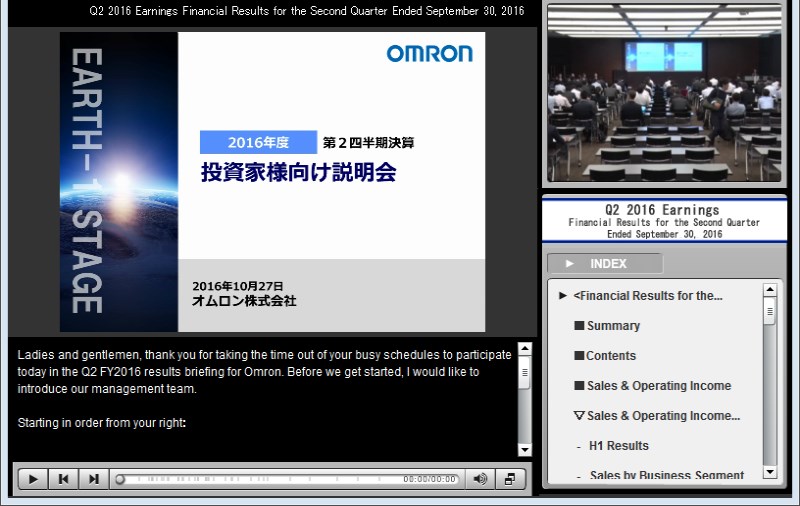【テロップ】
※各テロップ文字をクリックすると該当の場所がピンポイントで閲覧できます。
※各テロップ文字をクリックすると該当の場所がピンポイントで閲覧できます。
- 00:42:05.6 I have two questions. Continuing on from the previous question, I would also like to ask about the backlight business. I apologize for dwelling on this business but, with China being a significant factor in boosting IAB sales, I wonder whether you see potential for an increase in backlight order volumes with new entrants in the China smart phone market that are increasing investments in automation technology.
- 00:42:35.1 I do think there is potential. As I noted earlier, we do not see smart phone demand going away. Although there is potential for competition with OLED technology, LCD technology still has superiority in a number of areas. It is also a cyclical market. I don’t know if where we are today represents the bottom or the start of the upturn, but I would expect demand to recover at some point. That said, as I noted at the outset, we have seen prices collapse in the high performance LED backlight area, our area of strength. What we are doing now is optimizing our business for current market conditions.
- 00:43:19.7 Are you already starting to see signs of increases in unit volumes?
- 00:43:24.6 Relative to peak levels, volumes are still very low, as is reflected in revenue scale, which has halved. Of course, some of the lower volume is because we are being selective about the business we do with some customers.
- 00:43:43.0 Given this, if you are to continue on in the LED backlight business, would I be correct in assuming that you could potentially look at a broader range of applications and not limit yourself to smart phone applications?
- 00:43:54.3 That is certainly possible. That said, any expansion in to a new application would only happen after proper internal consideration. There is a lot that we have learned from our experience in this business to date. We would certainly leverage the lessons we have learned in making management decisions going forward.
- 00:44:11.0 Understood. Thank you. My second question is also a topic covered earlier: shareholder returns. In the past two fiscal years, you announced share buybacks at your 1H results briefings. This time around, you have chosen to maintain your initial dividend per share guidance although the implied payout ratio will exceed your stated policy benchmark of 30%, rising to 36%. Why did you choose not to buy back shares this time? Is the decision to maintain the initial dividend guidance related to the absence of a buyback? Any color on how you thought about share buybacks would be very helpful.
- 00:44:47.5 (Ando) In general it is quite challenging to respond to questions about why we did not do something. With regard to buybacks, there is not much to say beyond saying that we chose not to do so this time. That said, share buybacks are an alternative that we always consider, but we prefer to take a flexible approach. We do not have specific threshold levels that would automatically trigger a buyback. Ultimately, we look at total shareholder return levels in making decisions. We do understand that given that we had announced share buybacks at our 1H results briefing for two years’ running, there may have been some expectation for a buyback announcement this year. However, it is our policy to retain flexibility in doing share buybacks. In managing its business, Omron is highly conscious of capital efficiency so we ask your understanding for our decision this time around.
- 00:45:43.0 Understood. Thank you.
- 00:45:46.2 Next, the person in the front.
